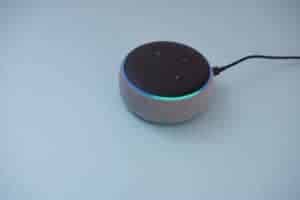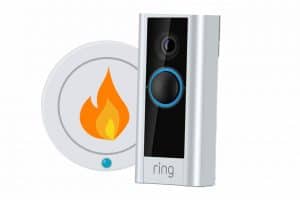Utilising smart sensors to monitor your home environment can provide you with invaluable data and insights that can help you maintain a safe and healthy living space. By implementing smart sensors, you can detect potential hazards such as gas leaks, smoke, and changes in temperature or humidity levels, allowing you to take prompt action to prevent any serious consequences. In addition to the safety benefits, smart sensors also enable you to optimise energy usage and reduce utility costs by monitoring and controlling heating, cooling, and lighting systems. If you want to learn more about the role of sensors in smart homes, check out this informative article on What Is The Role Of Sensors In Smart Homes? – Renke.
Key Takeaways:
- Smart sensors can help you monitor various aspects of your home environment, including temperature, humidity, air quality, and more.
- Utilising smart sensors can provide real-time data and insights to help you understand and improve your home’s living conditions.
- By setting up smart sensor alerts, you can receive notifications on your smartphone or other devices when specific environmental conditions exceed or fall below desired levels.
- Smart sensors can be integrated into your smart home system, allowing you to automate actions such as adjusting the thermostat or turning on an air purifier based on the sensor’s readings.
- Regularly reviewing the data collected by smart sensors can help you make informed decisions to enhance your home environment, leading to improved comfort and potentially even energy savings.
Selecting the Right Smart Sensors
When it comes to choosing smart sensors for monitoring your home environment, there are a few key factors to consider. From the type of monitoring you need to the compatibility with your existing smart home system, selecting the right smart sensors is crucial to effectively monitoring your home environment.
Factors to Consider When Choosing Smart Sensors
When selecting smart sensors for your home environment, there are several factors to consider. Key considerations include the type of environmental data you want to monitor, the compatibility with your smart home system, the range of the sensors, the accuracy and reliability of the data, and the ease of installation and maintenance. By evaluating these factors, you can ensure that you choose the right smart sensors for your specific monitoring needs.
- Type of environmental data you want to monitor
- Compatibility with your smart home system
- Range of the sensors
- Accuracy and reliability of the data
- Ease of installation and maintenance
This comprehensive evaluation will help you make an informed decision when selecting smart sensors for your home environment. This way, you can be confident that the sensors you choose will effectively monitor your home environment.
Types of Smart Sensors for Different Monitoring Needs
There are various types of smart sensors available to meet different monitoring needs in your home environment. Some common types of smart sensors include temperature sensors, humidity sensors, air quality sensors, motion sensors, and water leak sensors. Each of these sensors is designed to monitor specific environmental factors and can be used to create a comprehensive monitoring system for your home environment.
| Smart Sensor | Monitoring Needs |
|---|---|
| Temperature sensor | Monitoring indoor temperature fluctuations |
| Humidity sensor | Monitoring and controlling indoor humidity levels |
| Air quality sensor | Detecting pollutants and maintaining good air quality |
| Motion sensor | Monitoring movement and security in your home |
| Water leak sensor | Detecting and preventing water damage |
The variety of smart sensors available allows you to customise your home monitoring system to meet your specific needs. The versatility of these sensors ensures that you can effectively monitor the different aspects of your home environment to maintain a safe and comfortable living space.
Installation and Setup
When setting up smart sensors to monitor your home environment, it’s essential to understand the process and ensure correct installation. Smart sensors are integral to a comprehensive smart home setup, as they provide valuable data on various environmental factors. For a detailed understanding of what smart home sensors are and how they work, you can refer to this informative article on What are Smart Home Sensors, and How Do They Work?
Step-by-Step Installation Guide for Smart Sensors
One of the first steps in installing smart sensors is to carefully read the manufacturer’s instructions. It’s crucial to follow these guidelines precisely to ensure optimal performance. Below is a simplified step-by-step guide for the installation process:
| Step 1 | Identify the ideal location for sensor placement. |
| Step 2 | Ensure that the sensor is within range of the central smart home hub or bridge. |
| Step 3 | Connect the sensor to the smart home system using the manufacturer’s designated app or software. |
| Step 4 | Perform a test to verify that the sensor is functioning correctly. |
Tips for Optimizing Sensor Placement
When positioning smart sensors within your home environment, strategic placement is key to obtaining accurate readings and maximising their effectiveness. Here are some tips to help you optimise sensor placement:
- Avoid Obstructions: Ensure that there are no physical barriers that could interfere with the sensor’s functionality.
- Consider Environmental Factors: Take into account factors such as temperature, humidity, and light when deciding on sensor placement.
- Regular Maintenance: Periodically check and clean the sensors to prevent any build-up of dust or debris that could affect their performance.
This attention to detail in sensor placement will ensure that you receive accurate and reliable data to monitor your home environment effectively.
Integrating with Home Automation Systems
One of the key benefits of smart sensors is their ability to integrate seamlessly with home automation systems. This allows you to not only monitor your home environment, but also to take action based on the data collected by the sensors.
How to Connect Smart Sensors to a Central Hub
When setting up your smart sensors, it’s crucial to connect them to a central hub that is compatible with your home automation system. This hub acts as the brain of your smart home, allowing you to control and monitor all your devices from a single interface. By connecting your sensors to the central hub, you can receive real-time updates and notifications about changes in your home environment, as well as remotely control your devices from anywhere.
Setting Up Alerts and Automations
Once your smart sensors are connected to your central hub, you can start setting up alerts and automations based on the data they collect. For example, you can receive alerts on your smartphone if the temperature in your home exceeds a certain threshold, or if there is a leak detected by your smart water sensor. Additionally, you can create automations to adjust your thermostat based on the temperature readings, or shut off your water supply in case of a leak, all without any manual intervention.
Maintenance and Troubleshooting
Now that you have installed smart sensors in your home to monitor various aspects of your environment, it’s important to understand how to maintain and troubleshoot them effectively. By keeping your sensors in top condition, you can ensure they continue to provide you with accurate and reliable data about your home.
Routine Maintenance Tips for Smart Sensors
Regular maintenance is essential to keep your smart sensors functioning optimally. Here are some key tips to ensure the longevity and accuracy of your sensors:
- Check the power source: Regularly inspect the battery or power supply of your sensors to ensure they are adequately charged or connected.
- Keep them clean: Dust and debris can affect the performance of your sensors, so make sure to clean them regularly with a soft, dry cloth.
- Positioning: Ensure that your sensors are correctly positioned according to the manufacturer’s guidelines to ensure accurate readings.
Recognizing and implementing these routine maintenance practices will help to prolong the lifespan and effectiveness of your smart sensors, giving you peace of mind that they are performing as they should.
Troubleshooting Common Issues with Smart Sensors
Despite their reliability, smart sensors can encounter occasional issues that may disrupt their functionality. If you notice any inconsistencies in the data or performance of your sensors, try these troubleshooting steps:
- Check connections: Ensure all connections are secure and free from dirt or corrosion.
- Reset the sensor: Sometimes a simple reset can resolve minor issues, so refer to the user manual for instructions on how to reset your sensors.
- Update firmware: Check for firmware updates for your sensors and install them if available, as this can resolve compatibility and performance issues.
If you encounter persistent issues with your smart sensors, don’t hesitate to seek assistance from the manufacturer or a professional technician to diagnose and resolve the problem efficiently.
Advanced Tips and Tricks
Now that you have set up your smart sensors to monitor your home environment, there are advanced tips and tricks that you can utilise to enhance the efficiency and effectiveness of your system. Below are some key pointers to help you get the most out of your smart sensors:
- Customizing Notifications and Thresholds
- Leveraging Data from Smart Sensors for Better Home Management
Customizing Notifications and Thresholds
When it comes to smart sensors, customizing notifications and setting thresholds is crucial for ensuring that you receive the right alerts at the right time. By customizing your notifications, you can ensure that you are alerted to any significant changes in your home environment, such as a sudden increase in temperature or a potential water leak. Additionally, setting specific thresholds for different parameters, such as humidity levels or air quality, can help you to proactively manage your home environment and take necessary action when required. By personalising these settings, you can tailor the system to suit your specific needs and preferences.
Leveraging Data from Smart Sensors for Better Home Management
By leveraging the data collected by your smart sensors, you can gain valuable insights into your home environment and use this information to improve your overall home management. Whether it’s tracking patterns in temperature fluctuations, monitoring air quality trends, or identifying energy usage patterns, the data collected by smart sensors can provide you with a comprehensive understanding of your home’s day-to-day operations. This data can then be used to make informed decisions about energy efficiency, preventative maintenance, and overall home comfort. By analysing and interpreting this data, you can make proactive changes to improve the overall comfort, safety, and efficiency of your home.
Conclusion
So, now that you understand how smart sensors can help you monitor your home environment, you can take the necessary steps to implement them in your own living space. By utilising smart sensors, you can easily keep an eye on the temperature, humidity, air quality, and more, without having to constantly check these factors yourself. This not only provides convenience, but also peace of mind, knowing that your home is being monitored and maintained effectively. Whether you choose to install individual sensors or invest in a smart home system, taking advantage of this technology can greatly improve the quality of your living environment. By incorporating smart sensors into your home, you are taking a proactive approach to ensure the comfort and safety of your household.
FAQ
Q: What are smart sensors?
A: Smart sensors are devices that can detect changes in the environment and transmit data to a central hub or smartphone. They can detect things like temperature, humidity, motion, and air quality.
Q: How can smart sensors monitor my home environment?
A: Smart sensors can be placed throughout your home to monitor different aspects of the environment. For example, a temperature sensor can be placed in the living room to monitor the heating, while a motion sensor can be placed in the hallway to detect movement.
Q: What are the benefits of using smart sensors to monitor my home environment?
A: Smart sensors can provide real-time data on the conditions in your home, allowing you to make adjustments as needed. They can also send notifications to your smartphone if any abnormal conditions are detected, such as a sudden change in temperature or a water leak.
Q: How do I set up smart sensors in my home?
A: Setting up smart sensors in your home is relatively simple. Most sensors just require a Wi-Fi connection and a smartphone app for monitoring. Once you have the sensors and the app, you can follow the manufacturer’s instructions for placement and setup.
Q: Are smart sensors secure to use in my home?
A: Smart sensors use encryption and secure connections to transmit data, making them safe to use in your home. It’s important to choose reputable brands and keep the firmware updated to ensure the highest level of security.







